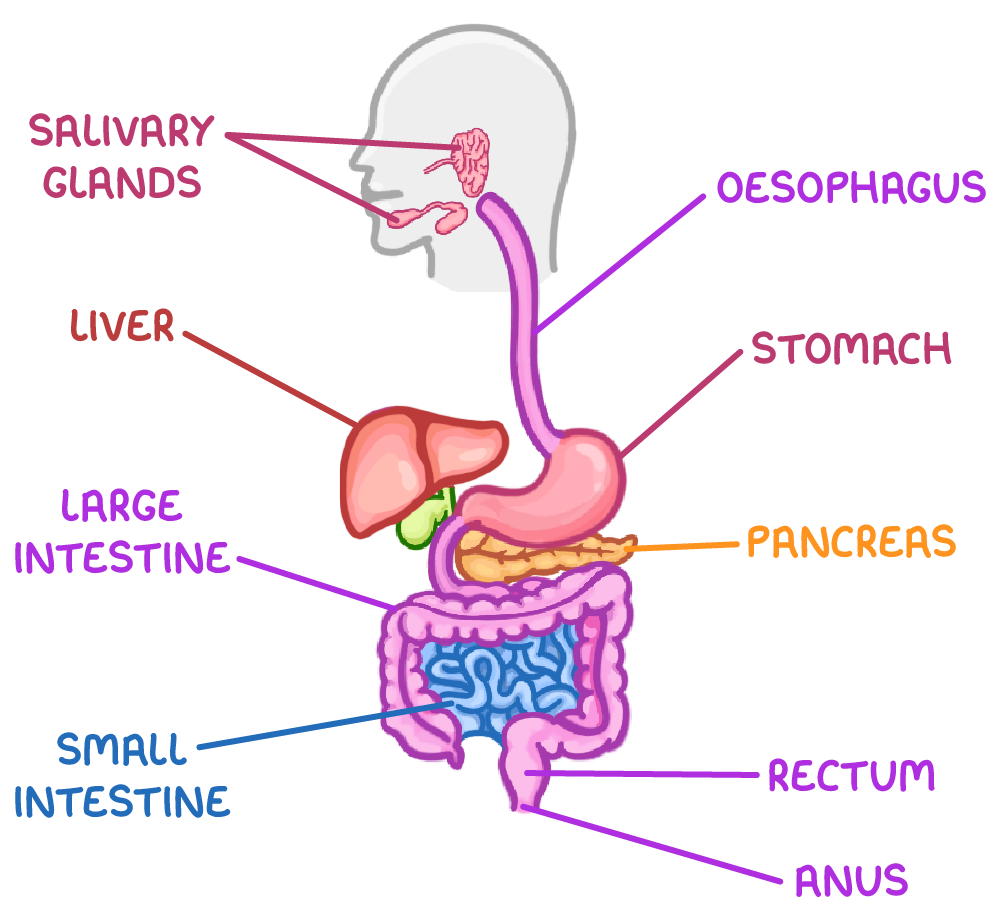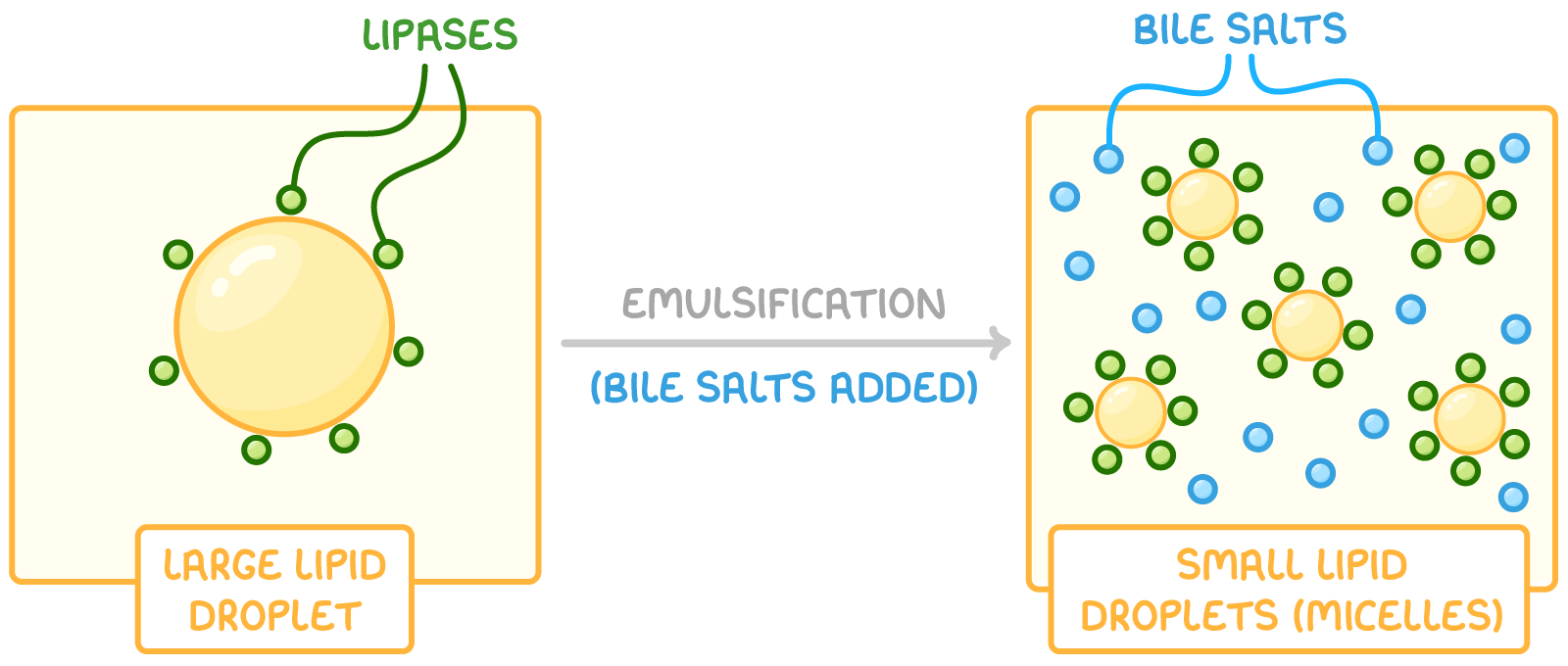Digestion & Enzymes
This lesson covers:
- The structure and function of the human digestive system
- The process of physical and chemical digestion
- The roles of enzymes in digesting carbohydrates, lipids, and proteins
Overview of the digestive system
The human digestive system breaks down food so that it can be absorbed into the body.
Physical and chemical digestion
The digestive system breaks down food in two main ways:
- Physical digestion - The break down of large food pieces into smaller ones to increase the surface area for chemical digestion.
- Chemical digestion - Enzymes catalyse hydrolysis reactions that break bonds in large insoluble molecules to form smaller soluble molecules.
The alimentary canal and accessory glands
The human digestive system consists of the alimentary canal, which is the pathway food takes through the body, and some associated accessory glands. These are shown in the image below.

The key components involved in digestion include:
- Salivary glands - These secrete saliva containing amylase.
- Oesophagus - This transports food to the stomach.
- Stomach - This digests food (especially proteins) and produces acid to destroy pathogens.
- Liver - This produces bile salts to aid lipid digestion.
- Pancreas - This secretes pancreatic juice containing enzymes (proteases, lipases, and amylases).
- Small intestine - This consists of three parts (you only need to know the final part, the ileum) that are the site of further digestion and absorption.
- Large intestine - This absorbs water and stores waste.
- Rectum - This stores faeces before removal via egestion through the anus.
Food travels through the alimentary canal in the following order:
Mouth ➔ oesophagus ➔ stomach ➔ small intestine ➔ large intestine ➔ rectum ➔ anus
Carbohydrate digestion
Carbohydrases break down large carbohydrates into smaller polysaccharides, disaccharides, and monosaccharides.
Carbohydrases are produced by the salivary glands, the pancreas, and the epithelial cells lining the ileum.
For instance, starch digestion occurs as follows:
- Salivary amylase breaks down starch into the disaccharide maltose in the mouth.
- Acid in stomach denatures salivary amylase.
- Pancreatic amylase continues starch digestion in small intestine.
- The epithelial cells in the ileum lining produce maltase to break down maltose into α-glucose monomers.
Other disaccharides are hydrolysed by specific disaccharidase enzymes:
- Sucrose is hydrolysed to glucose and fructose by sucrase.
- Lactose is hydrolysed to glucose and galactose by lactase.
Some membrane-bound disaccharidases, like maltase, are bound to epithelial cells that line the ileum.
Lipid digestion
Lipases break down lipids into fatty acids and monoglycerides. Lipases are produced by the pancreas and act in the small intestine.

The digestion of lipids occurs as follows:
- Bile salts emulsify lipids into tiny droplets called micelles, increasing the surface area of the lipids.
- Pancreatic lipase breaks down micelles into fatty acids and monoglycerides.
Protein digestion
Proteases (peptidases) break down proteins, polypeptides, or dipeptides into smaller units and eventually into amino acids.
Some proteases are produced by and act in the stomach. Other proteases are produced by the pancreas and the epithelial cells lining the ileum and act in the small intestine.
There are three types of protease that achieve this:
- Endopeptidases - These hydrolyse internal peptide bonds in the middle of proteins to form shorter polypeptides, increasing the number of ends for other proteases to work on.
- Exopeptidases - These hydrolyse peptide bonds at the ends of polypeptides to remove terminal amino acids or dipeptides.
- Dipeptidases - These break down any remaining dipeptides into amino acids.